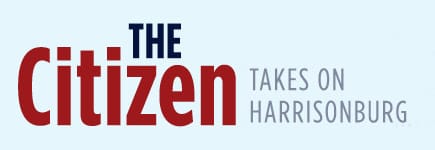
By Andrew Jenner, publisher
The city of Harrisonburg’s decades-long trend of rapid growth is no more. According to 2020 estimates published by the Weldon Cooper Center, the city had a population of 54,049 on July 1. While that’s up slightly from last year’s estimate, it’s lower than the 2016 estimate, capping a five-year period in which the city’s population essentially remained flat.
Over the prior 35 years, the city’s population more than doubled: from 25,400 in 1981 to 54,224 in 2016. Since then, Harrisonburg has seen a tiny net decline, according to the estimates (which, despite being dated July 1, include the local student population that spends most of the year living in the city).
Hamilton Lombard, a demographer at the Weldon Cooper Center, said the recent flatlining in growth is showing up in communities across the state and country.
“Many families were forced to rent in cities following the late 2000s housing crisis but as interest rates have dropped and home construction risen, more families are moving out into nearby counties, spurring population growth [there],” Lombard wrote in an email to The Citizen. “Home construction in Rockingham County has risen in recent years, while construction in the city over the last couple years is the lowest it has reported in decades.”
Slow construction of new houses and less space for development in the city are key factors in the city’s real estate market being extremely skewed towards sellers.
The county population has continued growing steadily over the past five years, adding more than 3,000 residents, according to the Weldon Cooper Center estimates. Its estimated population on July 1, 2020, was 82,809 people.

The city and county, which make up the Harrisonburg metropolitan area, have an estimated population of 136,858. Although the city population has not grown for the past five years, the metro area has grown at an annual rate of 9.3% over the past decade, making it the fourth-fastest growing metro area in the state.

Lombard said relatively high birth rates in both the city and county have boosted metro area population growth, as has the area’s attractiveness as a place to which people want to move.

While COVID-19 and associated rise of teleworking has led to widespread anecdotal reports of people fleeing large cities for places like Harrisonburg, Lombard said the pandemic’s lasting demographic effects remain “mostly a matter of speculation at this point.”
“Telecommuting wasn’t that uncommon before the pandemic and telecommuters was more likely to be concentrated in smaller towns with access to outdoor recreation, similar to Harrisonburg,” he continued. “The area checks a lot of the boxes on the list many telecommuters who relocated before the pandemic had. From initial reports since the pandemic, telecommuters appear to be moving to the same types of places they moved to before the pandemic.”
The Weldon Cooper Center had not initially planned on releasing 2020 estimate until after the U.S. Census results were published. After those were delayed due to the pandemic, Lombard said, the center decided to publish a 2020 estimate for all Virginia counties and towns after all. He cautioned that margins of error increase the farther an estimate gets from an official census.
Journalism is changing, and that’s why The Citizen is here. We’re independent. We’re local. We pay our contributors, and the money you give goes directly to the reporting. No overhead. No printing costs. Just facts, stories and context. We’re also a proud member of the Virginia Press Association. Thanks for your support.













